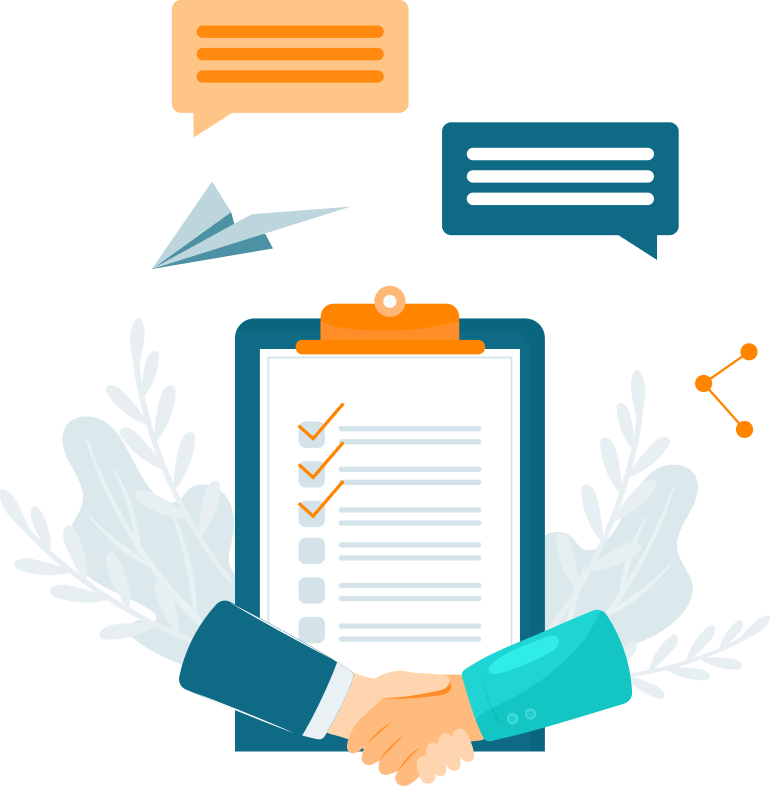You may know that blogs are important to your MSP business marketing strategy, but wonder… what do you do with them once they’re posted?
Think of blogs like seeds in a garden. You can’t just toss seeds onto the ground and expect them to take it from there. There’s a process that happens, which includes watering, pollinating, and finally, harvesting.
Your blogs are the same way when it comes to your sales funnel. Feeding the funnel process using your blogs can earn you plenty of sales to harvest at the end of the day.
This article will give you a high-level overview of how blogs fit into your sales funnel and can be a powerful fuel for your tech business marketing engine.
Generate Traffic to Your Blog
At the top of your IT business sales funnel is getting people to notice you, visit your website, and interact with you. Once you’ve got your blogs up on your website, then what?
There are two tactics you need to take here. One is to optimize your blogs for search engines so that in time they’ll start generating traffic for you. The second is to drive immediate traffic to you blogs so they can begin generating leads right away.
Taking that dual traffic approach covers your bases for generating leads right now and having ongoing lead generation in the months to come.
Tactic #1: Optimize Your Blog for Ongoing Traffic with SEO
Search engine optimization for your blogs is key to giving them the best chance of becoming “free advertisements” for you in the future.
For example, over several months Tech Blog Builder has been able to get blogs for clients to page 1 of Google for search terms like “voip cost savings.”
Once your blog starts gaining ground in search engine rankings, you’ve got an entirely new lead generation channel working for you 24/7
Here are the basics on giving your blogs an SEO boost. You can find more details on optimizing your MSP blogs for SEO here.
- Choose 1-2 keywords to optimize for.
- Use those keywords in the title, H1 and H2 headings, and naturally throughout the article.
- Use your city/area name with your keyword (i.e. computer repairs in Denver).
- Use an attention-grabbing headline
- Use keywords in alt image tags
- Use different keywords in different blogs
- Use structured data to get an additional SEO boost
- Use keywords within your article as anchor text to link to services pages on your site
What are blogs doing for your site once they’re up?
- Generating traffic (77% of internet users read blogs regularly)
- Improving your whole site’s rankings (websites with blogs have over 434% more indexed pages than those without them)
- Getting visitors to trust your business (68.5% of customers say a blog adds credibility to a website)
Tactic #2 Drive Traffic Right Now Using PPC, Social Media & More
Getting SEO traction from a new blog post does take a little time, you can’t expect it to be ranking in just a week. So, while you’re waiting for your blog to climb the search results pages, you want to drive traffic to it right now.
A great thing about blogs is that they give you a good reason to reach out to people. You’ve got brand new information on a helpful topic that your customers will want to read. Telling them about it gets them visiting your website, reading your CTA (we’ll cover that next!), and thinking about why they may need your products and services.
Blogs act as a bedrock to your entire MSP content marketing strategy because they give you an opportunity to drive traffic to your site.
Say you just put up a new blog about how businesses can empower remote workers with Teams in Microsoft 365 (which you sell and manage). You can drive lead traffic to that blog by:
- Video: Post a video on YouTube with the blog’s highlights
- PPC: Create a PPC campaign for Teams linking to your blog
- Social Media: Post your blog link and header image on social media
- LinkedIn Article: Use part of your blog as a “part 1” article on LinkedIn with (a read more here…)
- Email Newsletter: Use the blog for your email newsletter or an email blast
Each of those marketing channels is a way to drive traffic to your new blog right now, so you can generate some viable leads.
Hook Them with a Call To Action
Once you have traffic that’s been attracted by your blog, the next part of your sales funnel is to turn website visitors into actual leads. For this you need them to interact with you in some way and at the very least, give you their email address.
If you just write your blog and don’t give them an action to take at the end, after they read the article, you’ll just lose all that traffic you generated and never know who they were.

For each blog you post on your website, you should have a specific call to action (CTA) that you want them to take. This could be:
- Call to learn more
- Sign up for a free trial
- Sign up for our newsletter for more tech tips
- Start your managed services plan today
- Request a free consultation
- Get a free IT security audit
Use a CTA that makes sense for the blog topic. Here are several tips on writing a killer CTA for your MSP website.
Your goal is to convert the website visitor into a lead that you can nurture.
Nurture Your Blog Leads
The next step of a sales funnel is nurturing those leads so you can convert them into sales. This involves reaching out to them in some way. One of the most effective and least time-consuming ways to nurture leads is through email.
Once you have a person’s email address you can send them your monthly email newsletter or a specific series of sales-related emails in a drip campaign.
Statistics show that drip campaigns work to convert leads to sales. Email drip campaigns are shown to:
- Get 80% higher open rates than a single send email
- Get 4-10x higher response rates
- Produce 50% more-sales ready leads
- Produce a 20% increase in sales
Here are two ways you can use blogs to nurture your leads:
- Include them in your email blasts and newsletters to your lead list. New blogs give you relevant content that keeps people subscribed and sends them to your site.
- Add particularly well performing blogs into your email drip campaign, so you ensure all new leads see them.
Ask for the Sale
One step that far too many business owners miss is to ask for the sale. They’re afraid of sounding like a used car salesman or being too pushy. But if you don’t ask for the sale a lead might just remain a lead and never convert.
Blogs can help you here too. If you use compelling statistics in your MSP blogs, you can use these to help you when asking for the sale.
For example: “I know you may be still be on the fence about signing up for managed services, but if you sign up today, we can make sure you’re protected from cyberattacks tomorrow. Our latest blog shows how they’re on the rise and the FBI has seen a 400% in cybercrime reports. You can read it here.”
You can also ask for the sale in a blog’s CTA, such as “Call us to start your Microsoft 365 subscription today.”
Use blogs to give people a compelling reason to buy your products and services. For example, you could post a blog about all the areas of cost savings with a VoIP phone system, then use that blog as a reference anytime you’re trying to close a deal.
Generate Cross-Selling Business
Blogs give you an excellent opportunity to cross-sell different products and services to an existing customer. For instance, you may have a managed services client that decides to purchase the VoIP platform you’re offering because they just read your blog about it.
When you continually generate new blogs about different aspects of your business, it lets customers know about another technology service of value to them that you offer.
Using blogs to cross sell can cost you less than acquiring new customers. It costs between 5-25 times more to get a new customer than to keep a current one.
Recap of How to Use Blogs in Your Sales Funnel
Blogs can help drive people through every part of your MSP business sales funnel. Here’s a recap on how to use them.

Drive Traffic
Use SEO optimization for blogs, plus generate traffic to new blogs with PPC/social/email/video.
Call To Action
Make sure every blog has a CTA so you can use it to turn website visitors into leads.
Nurture Leads
Send blogs in your email newsletter or as an email blast. Use particularly well received blogs in email drip campaigns to leads.
Ask for the Sale
Use blogs as a value statement and to point to compelling statistics about your services when you ask for the sale.
Cross-Sell
Use blogs to let all your customers know about all your products and services to cross-sell them something they don’t have.
Blogs Can Be an Integral Part of the Sales Process
If you know how to use your blogs to their fullest, instead of only sitting up there on your website, they’ll be an active participant in your sales process helping you drive more leads and convert more sales.
Do you have challenges knowing how to use your blogs? Let us know in the comments!


